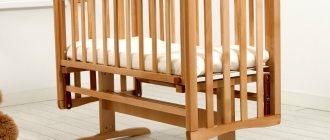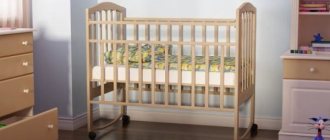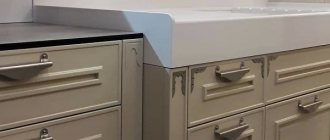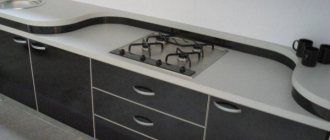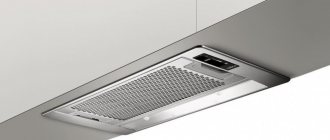/Household appliances/Hood and geyser/
One of the criteria for choosing a hood for the kitchen is its size. They come in different shapes, but since they are standardized, choosing the right model will not be difficult, especially if a competent sales consultant helps you. And yet, it is better to know some rules and nuances before making a purchase.
Variety of kitchen hood parameters
The most important parameters when selecting a kitchen hood are:
- Width;
- Depth;
- Height.
The most common width standards are 30, 45 and 60 cm. Depending on the type of hood, the size can vary greatly. It is worth noting that the characteristics of kitchen hoods, namely performance and efficiency, depend on the dimensions of the product. Large units do their job better, but take up more space.
In addition to overall dimensions, products differ from each other in their functionality, material, and shape. To choose the right product, you should take into account the entire range of characteristics, including paying attention to the diameter of the kitchen hood.
What are the sizes of hoods?
What sizes are hoods? The dimensions of kitchen exhaust hoods include three parameters:
- Width. This parameter is the most important, as it affects the volume of dirty air discharged. Width is the distance between the side parts of the body.
- Depth. This is the distance from the front (front) part of the case to the rear (back) wall.
- Height. Height indicators vary greatly for different types of kitchen hoods and depend on the configuration features. Thus, the height dimensions of an inclined or dome hood are always larger than the dimensions of a flat suspended model of equipment.
Each parameter is discussed separately below.
Why do you need a hood in the kitchen?
It is recommended to use the product in any kitchen. It is especially important to use an exhaust device if there is no high-quality ventilation system for the room. The installation is suitable for both a gas stove and an electric hob.
The main task of an exhaust system is to remove odors and pollutants. In addition, the products can filter and protect furniture from greasy stains. Even the most budget device connected to an exhaust ventilation system can combat odors in the room. There are models that work without connecting to ventilation. Thanks to the installed filters and recirculation, it is possible to clean the air from fats, odors and large particles.
Do the dimensions of the hob or gas stove affect the choice of hood dimensions?
The instructions for hoods produced by different manufacturers indicate that in an ideal situation, the width of the hood should correspond to the same parameter of the stove or hob above which the device is planned to be placed. If you choose the right dimensions, the device will always work efficiently and perform its main tasks, efficiently collecting and removing harmful fumes, carbon monoxide and fat particles from the room.
If you have purchased a stove, simply measure it and purchase a model of exhaust hood that will match the dimensions. If you are just planning to purchase a stove, then it is recommended to take as a basis the distance between wall-hung cabinets or furniture modules, between which the hood will be placed. For a built-in model, you need to find out the dimensions of the cabinet/cabinet to be built-in.
But it is important to focus not on the dome (umbrella) of the hood, but on the dimensions of its working surface, through which polluted air will be sucked in and discharged. The housing can be quite wide, but this cannot provide sufficient dimensions for the working exhaust surface.
Size selection features
When selecting a product by width, you need to take into account a number of important nuances. The dimensions of the hood must be determined in advance for a specific kitchen. The product must be no narrower than the hob.
Among the main dimensional parameters that you need to pay attention to are:
- The ratio of the stove or hob to the dimensions of the exhaust device;
- Dimensions of kitchen cabinets;
- How far does the hood protrude?
For certain situations, the most preferable option would be a telescopic version of the product, which is distinguished by its retractable part and maximum coverage of the cooking area. For hidden installation, you should choose built-in hoods.
Advantages of Smeg built-in hoods
The Italian manufacturer Smeg is known for collaborating with famous designers throughout its history. Therefore, one of the main advantages of branded built-in hoods is originality and unique aesthetics.
The brand pays no less attention to the technological aspect, which is why Smeg exhaust devices:
- productive,
- quiet at work,
- energy efficient,
- reliable and durable.
Our catalog presents a wide range of Smeg hoods built into cabinets, countertops and ceilings. For your convenience, a convenient search system is provided - buy the ideal model that suits all technical parameters. You can buy equipment online or by phone, and find out details about delivery conditions on the website or from the manager.
What to look for when choosing depth and height
As a rule, problems with choosing the width rarely arise. But at the same time, it is not always possible to immediately determine the depth and height of installation. To understand exactly how deep the hood is required, you need to decide on its type. At the moment, all hoods can be divided into built-in (fully built-in, telescopic, flat) and non-built-in (inclined, dome, corner, island, T-shaped).
To maximize space saving in the kitchen, a non-built-in inclined hood can be a good solution. Such a product can have fairly high productivity, while its depth will be minimal. The size of an inclined kitchen hood usually determines its capabilities.
Depth selection
Depth is a fairly important parameter. As a rule, it does not exceed the width. For built-in models, it is equal to or less than the depth of the wall cabinet. The built-in hood can be expanded due to the retractable telescopic part. The optimal depth is considered to be 45 cm. Higher values are necessary to control large cooking surfaces.
If you choose a dome hood, then special attention should be paid to both depth and height. If the product sticks out too much, the overall appearance will be unsightly. An installation that sticks out will draw too much attention to itself and hang over the stove. If the kitchen is small, then the inclined dome option is considered the best solution.
Important! The depth of the kitchen hood is determined taking into account a number of important factors, including personal preferences, budget and goals.
Height selection
When choosing a height, the following important nuance should be taken into account - the kitchen hood must be located above the hob at a certain distance. If the product is selected for a gas stove, then the hood must be located at a height of at least 75 cm from it (maximum distance 85 cm). If we are talking about an electric stove, then the permissible installation height of the kitchen hood is at least 65 from the surface (the maximum distance is also 85 cm). If the product is installed at a height above the permissible limit, its performance is reduced, which directly affects the efficiency of the work performed.
The height of the hood must be determined taking into account the parameters of a gas or electric stove. The unique features of the room and the location of the exhaust ventilation should be taken into account. It is worth noting that the most important thing is to comply with the distance requirements from the hob. If the exhaust grille is located higher or on the other side, then it can always be approached using a flexible air duct. In non-built-in hoods, the air duct is hidden behind a decorative box, leg or trim. In built-in models, it is located inside or above cabinets.
Additional functions
When asking which hood to choose in 2022, you should pay attention to additional functions. They make the operation of the hood more comfortable and save the owner’s energy.
Options for additional functions:
- Control Panel. Can have only one slider or several buttons. Advanced models are equipped with an LCD touch screen. It is worth considering that the sliders and buttons will become greasy over time and will be quite difficult to clean.
- Availability of Wi-Fi. Allows you to control the hood remotely.
- Timer. It also simplifies the operation of the hood. Necessary if there is a microwave oven, multicooker or convection oven with its own timer working nearby.
- Air pollution degree sensor with automatic device switching mode. This function allows you to save energy and make the hood work quieter.
- Backlight. A hood that is placed above the stove is convenient, as it illuminates the hob.
What other parameters should you be interested in when selecting
In addition to the dimensions of the product, the following parameters are extremely important when choosing:
- Noise level;
- Number of operating modes and type of control;
- Maximum performance;
- Filters used.
The most important characteristics are performance and noise level. Experts know a lot about how to choose a product based only on these two parameters. For home use, the product requires high efficiency and quiet operation. Knowing what sizes hoods come in, you can quickly select suitable options for yourself.
Noise level
This parameter is indicated for minimum and maximum performance. 45 dB in maximum performance mode is considered quite good. If the value is above 65 dB, then the product is classified as noisy.
The noise level of the installation is acceptable if you plan to use it in industrial workshops and kitchens. In an ordinary apartment or private house, it is recommended to choose products that can demonstrate high efficiency with low noise levels. Thanks to the use of suspended hoods, it is possible to achieve minimal noise when pulling.
Number of operating modes and type of control
Control can be electromechanical and touch. Modern built-in hoods are equipped with many sensors. Products can be controlled remotely using a remote control or connection via a smartphone.
The most important is the number of operating modes. An advanced installation can operate in removal or recirculation mode. By changing the performance indicator, you can adjust the suction power.
Maximum performance
Thanks to this value, it is possible to understand how productive the hood is. It is worth noting that the selection of a product should not be carried out according to the principle: the more powerful, the better. The kitchen hood is selected based on the area of the room and the level of load on the stove. If there should be a hood in the room, then its selection should be done correctly.
There is a special formula for deducting productivity, which looks like this: S (kitchen area) x H (room height) x 12 (air renewal coefficient, enshrined in building codes). For example, 8 m2 x 2.6 m x 12 = 249 m3 (minimum required hood capacity in m3 for a room of 8 m2 with a ceiling height of 2.6 m).
If you plan to prepare dishes and use products that have a strong smell, the device should be chosen with a reserve. Once the dimensions of the kitchen hood have been determined, you can proceed to calculating the performance.
Filters used
Regardless of what mode the device operates in (exhaust or recirculate air), at least a carbon filter must be installed. The more filters are installed, the better the installation works. Moreover, the quality of filtration affects the service life of the hood intended for recessing.
It is advisable that the product be equipped with a carbon and grease filter at the same time. The carbon element allows you to get rid of odors. In turn, the grease filter traps fats and prevents them from getting into important compartments of the device. After installing the hood over the stove, fat will somehow begin to get into it. It is worth noting that the filtration elements should be replaced regularly to maintain the performance of the hood and prevent breakdowns.
Noise level
Some noise during air purification is normal for an extractor hood. But previously the equipment worked too noisily, and this could create considerable discomfort for the owner. Now manufacturers offer a lot of optimal solutions - effective sound absorption and noise reduction technologies. Therefore, standard built-in models will in any case be quite quiet, even at high suction speeds. At minimum power, the average noise level for built-in hoods is up to 35 dB.
The most popular product sizes for different kitchens
Depending on the type and area of the room, the size of the kitchen hood can vary greatly. The selection is greatly influenced by the presence or absence of hanging cabinets and the individual characteristics of the stove on which cooking will be carried out.
There are certain standards for width and depth, among which are:
- 60 and 45 cm;
- 50 and 45 cm;
- 45 and 30 cm;
- 30 and 30 cm.
A standard stove with 4 burners is about 59 cm wide, so the best solution in this situation would be a hood with a width of 60 cm. The standard width of a built-in hood in this case will also be about 58-59 cm.
In small rooms, when arranging a kitchen set and household appliances, you should consider hobs with 2 burners and a width of 30 cm. In this case, you can effectively remove odors and dirt even using the most compact wall-mounted options. If you take into account a number of simple nuances, you will be able to easily determine the size of the kitchen hood.
What to consider to choose the optimal hood sizes
To make the right choice and make the final decision regarding determining the optimal sizes, you must remember to take into account the following points:
- The area of the kitchen, measured in square meters. If the area is small, a large device, especially an island or dome type, will definitely not fit into it.
- The height of the ceilings in the room. The higher the ceilings, the more significant the height of the hood can be. A large dome or island model of appliances will fit perfectly into a spacious kitchen. And if the room has a small area, then it is better to opt for a more compact option.
- The area and shape of the area allocated for the installation of the hood. The location of the site also plays an important role, because it is necessary to fit the body into it as rationally as possible. The zone can be located under the facade of a wall-mounted kitchen unit or in a closet if the model is built-in. Often the spaces between cabinets are used for installation. In any case, the area must be carefully and accurately measured.
How to install the product
Installing a hood is not a complicated procedure, but the algorithm of actions may vary significantly depending on the type of product. If we are talking about a built-in version, then additional work will need to be done to fit and integrate the device into the wall cabinet. In this case, the width of the kitchen hood is important. Non-built-in models are easier to install.
The installation is carried out step by step. First, preparatory work is carried out. You should decide in advance how the air duct line will be drawn to the ventilation grille. If the kitchen is undergoing a major renovation, then you should separately determine how the exhaust system will be installed. If the device is installed at will without carrying out a comprehensive repair, then the difficulties will lie in the impossibility of making significant adjustments to a project that has already been implemented (often there is not even a place above the gas stove).
Preparatory work
Preparation includes carrying out related work that is usually carried out when renovating a kitchen. Make sure that there is a power outlet next to the device, as well as other necessary communications.
If the installation is carried out in an already renovated kitchen, then preparation includes an estimate of the possible location for installation and an assessment of options for hidden communications.
Performing markup
It is extremely important to measure everything correctly before moving on to creating the mounting holes. The built-in hood is simply installed inside the wall cabinet. To do this, either a hole is cut or the lower part of the cabinet is removed (moved to the upper point).
If we are talking about wall-mounted devices, then very often the height of the hood is determined by using a special template, which is usually included in the kit. If there is no template, then you will need to attach the product to the wall, evaluate its position relative to the slab and make the appropriate notes. Once the ideal location has been found, you will need to make markings for drilling holes. A ventilation specialist can tell you in detail what size hoods can be used in the kitchen.
Air duct placement
Typically, the air duct begins to be installed after installing the exhaust product. The most preferred type of duct is a flexible round duct with the ability to stretch as needed. If all communications are calculated as accurately as possible, then it is permissible to use solid plastic pipes. All connections must be securely connected with clamps.
Depending on the task at hand, the air duct can be hidden or open. The length of the hood can completely cover the need to use any hidden boxes. If a dome model is used, then all communications can be hidden behind a decorative overlay.
Important! The shorter the distance to the ventilation grill, the more efficiently the device will work. If it is not possible to avoid long communications, then you should try to avoid the appearance of bends inside the pipe.
Power connection
Nutrition should be taken care of in advance. Despite the fact that built-in hoods belong to the class of devices that do not consume a large amount of energy, they pose a certain danger. Products are often made in a metal case, so the power outlet must be grounded. The connection rules for all products are the same, and the hood parameters do not affect this in any way.
It is not recommended to damage the integrity of the power cord unless you have the skills of an electrician. If the wire does not reach the outlet, then the only solution to the problem without making significant changes to the design is to use an extension cord.
Installation of a hood in a cabinet
Features of the equipment of a kitchen cabinet for a built-in type hood depend on which model you choose. Such devices can be fully built-in (this option is preferable if you have chosen a model with large dimensions), as well as partially mounted in furniture (for example, a built-in 50 cm kitchen hood can look outside the cabinet and not spoil the perception of the design).
Attention! There is a separate category of built-in models that are installed not in the cabinet, but in the countertop next to the hob.
How is a hood built into a cabinet? This process does not take much time and does not require high professionalism .
It is enough to perform the following steps sequentially:
- After choosing the appropriate model, prepare a wall cabinet for the hood . Its dimensions in length and width should slightly exceed the parameters of the exhaust equipment: this way you will reduce the risk of breakdowns and fires during its operation. A cabinet for a large hood will have to be made to order or designed independently. The cabinet above the hood, which is only partially mounted inside, may not correspond to the dimensions of the cabinet: it is enough to cut a suitable hole in the bottom.
- It is better to calculate the distance between the hood and the hob in advance . Gas stoves are more fire hazardous and negatively affect the serviceability of the hood, so the distance between these types of equipment should exceed 75 cm. For electric stoves, 65 cm is enough. Do not make the distance excessively large, so as not to reduce the cleaning efficiency.
- Plan how the treated air will be vented outside . If you have chosen a circulation model, air outlet zones are already provided. For models with a vent, connect a ventilation pipe that will discharge air into the shaft.
- Understand the wiring : Hoods run on electricity, and unless you plan to have an outlet nearby, you will have to connect the device to the network in other ways.
- If the cabinet above the hood is not suitable for its installation, make holes in the walls for fasteners . For convenience, draw a horizontal axis and drill places for screws, focusing on the shape and size of the equipment.
- Proceed with the installation of the kitchen hood built into the cabinet in a strictly horizontal direction.
- Provide all necessary communications : connect the wiring, as well as a corrugated or other type of ventilation pipe. Make sure the system is sealed.
After completing the installation work , turn on the hood to make sure it is working properly .
Kitchen hoods built into cabinets can only become a reliable assistant if you have not made mistakes when installing them and have chosen a good quality model.
Therefore, we invite you to find out which manufacturers can guarantee a long service life of their built-in equipment.
How to use a hood correctly
Despite the fact that many people have hoods in their kitchens, not everyone knows how to use them correctly.
Among the basic rules for using installations are:
- Turn on a few minutes before cooking begins;
- Leaving the appliance turned on for 10-15 minutes after the end of active cooking;
- Smooth increase in productivity.
It is recommended to turn on the device at minimum speed. This will significantly extend the service life of the engines. To correctly select the required current capacity, you should evaluate the number of dishes and the presence of odor in another part of the room. The main task for which kitchen hoods are used is to effectively remove odors. If they cannot cope with this, then productivity should be increased.
Features of installation and placement
The installation of the hood must be carried out according to the rules and comply with fire safety requirements. Here are the most important standards:
- The distance between the exhaust work surface and the burners. For standard gas stoves, this distance should be at least 65 cm, and for electric hobs - at least 60 cm. The inclined model can be installed a little lower: 55-65 cm from gas burners and 35-45 centimeters from electric ones. If the hood is located lower, this may lead to melting or even fire of the work surface. But you should not only reduce the distance, but also increase it, because if you move the equipment too far away, this will reduce the efficiency of work.
- For installation work, you should prepare the necessary tools and additional components. These are a screwdriver, self-tapping screws, a screwdriver, a pencil, a construction tape and level, a hammer drill, a hacksaw. It is also necessary to prepare the air duct, ventilation grille and clamps for installation on the wall.
- All joints are treated with sealant. By leaving holes, you will unwittingly disrupt the operation of the device and impair the removal of dirty air (it can flow back into the room).
- The built-in hanging hood must be secured in the cabinet with self-tapping screws. The cabinet itself is also securely fixed to the wall.
- If the device model has a plug for connecting to electricity, then it is simply inserted into the outlet. But there are built-in models with exposed wire ends, and they are connected via a terminal block. It is better to hide the wires so that they do not remain visible. If damaged and water gets in, a short circuit is likely to occur.
- To decide on the installation diagram of the device and the air duct, you need to follow the basic rules: minimum distances, fixation, minimum number of bends and no creases.
Is there a relationship between productivity and size?
The size of a kitchen hood is quite an important parameter, so many are interested in the relationship between dimensions and power. Indeed, there is a direct correlation between performance and dimensions. A larger product can accommodate more powerful motors. However, modern exhaust systems can have high power and at the same time be small in size.
You can correctly determine the dimensions of a kitchen hood after taking into account not only the characteristics of the kitchen, but also the available budget. A compact, productive product has a higher price. This is worth remembering if a person needs to find a kitchen hood in the budget price segment.
The standard dimensions of the product (width 60, depth 45) do not yet mean that the installation is powerful. That is why it is recommended to study each parameter separately. Finally, pay attention to the cost and functionality offered for a specific price. You should decide in advance which personalized model will be needed (for embedding or wall mounting).
Manufacturers
In addition to elite branded equipment, which, due to the presence of additional capabilities, costs much more than its analogues, high-quality and inexpensive built-in hoods can be offered to us by manufacturers Hansa, JetAir, Krona, Lex, Elikor and many others.
When choosing a model with a suitable price for you, pay attention not only to the power and size of the case, but also to the brightness of the backlight, noise level, and the presence of filters (sometimes you have to buy them additionally).
Important! Pay special attention to studying the model range of telescopic hoods for the kitchen: a slider panel that extends manually or automatically will increase the air purification area.
Prices for built-in hoods from well-known manufacturers:
- Bosch - on average from 9 to 30 thousand rubles;
- Electrolux – from 8 to 19 thousand;
- Gorenje – 5-15 thousand rubles;
- Korting – from 6 to 45 thousand;
- Elikor - average cost is about 3-6 thousand rubles;
- Hansa – from 5 to 14 thousand;
- Hotpoint-Ariston - about 8 thousand per hood;
- Jet Air – from 7 thousand rubles;
- Siemens - from 10 to 30 thousand rubles;
- Zigmund & Shtain – from 6.5 thousand rubles;
- Zanussi - on average from 4 to 13 thousand.
You can study information about the operating efficiency and operating features of modern built-in type exhaust devices in the technical documentation.
How to calculate the power and performance of a kitchen hood depending on the area of the room
The higher the exhaust power, the faster the air will be purified. The required productivity for a given room can be found in the table, where the calculations are based on the area of the kitchen and its height. The lowest productivity is for cheap models, approximately 200-300 m3/h. They can be installed only in small kitchens and provided that food is not cooked on the stove very often. If the hob is used frequently, then the power should be at least 600 m3/h.
Formula for calculating the power of a kitchen hood
You can do the calculations yourself using a simplified formula:
Q – exhaust power (m3/h);
S – kitchen area;
H – kitchen height;
12 – coefficient (number of air replacement cycles per hour)
According to sanitary standards, 10-15 air replacement cycles should occur within an hour. The factor 12 is the chosen average value.
With these values it turns out:
Other factors to consider
Calculations using the formula have an average value, because other nuances must be taken into account:
- Hob type. For an electric stove, the coefficient reading can be up to 15, because apart from the fumes from the products, no other substances enter the air. But with a gas stove, harmful substances from gas combustion also enter the air. In this case, the coefficient is taken from 20.
- Hood type. When using flow-through, it is necessary to take into account the throughput of the existing ventilation shaft. With recirculation, this factor does not matter.
- Room layout. If there is an open entrance to the next room or the door there is often opened, then you need to take into account the large area of the room when calculating.
Overview of various models
In order to make a more detailed selection of kitchen hoods, let’s consider the advantages and technical characteristics of several different models. This will help you visualize what manufacturers offer.
Gorenje DU 5345 W
One of the most popular and inexpensive standard wall-mounted kitchen hoods measuring 50 cm.
Mounts under a wall cabinet or independently to the wall. Has a capacity of 325 cubic meters. m/hour and noise level 54 dB.
This model has three operating modes and push-button control. It only works in recirculation mode. Its price is low and amounts to about 2000 rubles. This model is suitable for a small kitchen with an area of 6-8 square meters. meters, even if the volume of food preparation is small.
Kaiser A 9416 WBE
The presented model is 90 cm wide, made of specialized enamel and has decorative elements.
Its productivity is much larger and amounts to 780 cubic meters. m/hour. The noise level is relatively low and amounts to 57 dB.
This hood model can operate either in recirculation mode or be connected to the ventilation system and operate in exhaust mode.
It has a telescopic tube, which allows you to adjust its height. The height of the dome is 64 cm. Despite the visible higher quality characteristics compared to the previous model, it should be taken into account that its price is slightly higher and will range from 10,000 to 11,000 rubles.
Kronasteel Kamilla Wood 2M 600 inox
This model is equipped with a retractable part. With a width of 60 cm, this kitchen hood has a capacity of 550 cubic meters. m/hour and low noise level of 48 dB.
Equipped with two motors, push-button control. The original design with unpainted wood trim makes this model attractive. Suitable for a kitchen with an area of about 10 square meters. m. The cost of this model ranges from 3,500 to 4,000 rubles.
Falmec Twister 45
We especially note the Premium class models. Their designs vary; they can be finished in glass, wood or metal, and have different shapes and colors.
As an example, let's look at the Falmec Twister 45 island model with the E.Ion system. This model has a width of 45 cm and a capacity of only 450 cc. m/hour, but at the same time it is equipped with an air ionization function, due to which it not only neutralizes odors, but also makes the air cleaner and healthier.
The aluminum body has an original cylindrical design. All this together made the cost of such a hood quite high. It is about 105,000 - 110,000 rubles.
When choosing a specific model, all other things being equal, it is better to choose a model from more reliable manufacturers. Firstly, high-quality air purification is largely the key to your health and cleanliness in the kitchen, and secondly, the uninterrupted operation of equipment allows you not to waste time and nerves on repairs, transportation and other unpleasant little things.
Therefore, you should approach your choice carefully and it is advisable not to skimp on it. The most popular manufacturers of hoods are Kaiser, Kronasteel, Gorenje, Siemens, Bosh and others.
About duct sizes
To achieve maximum efficiency of a kitchen hood, you need to understand the air duct - the air outlet pipe. It goes from the device to the ventilation duct. It is logical to install the hood above the stove and strictly under the ventilation hole: then the air duct will not have a large length and bends. But it is not always possible to perform such competent installation.
The length of the air duct must correspond to the distance from the hood located above the stove to the ventilation duct. Moreover, the connection with pipes is made so that the route ultimately has a minimum number of bends (turns) at angles. In addition, the bending angle should not exceed a straight line - 90 degrees. Otherwise, the air through the air duct will not be able to quickly and efficiently be discharged into ventilation. And this will disrupt the operation of the device and also require an increase in suction power. Each bend reduces the final power by approximately 10%.
Air ducts for exhaust devices can be corrugated plastic and aluminum, as well as solid plastic with a round or rectangular cross-section. The diameter of corrugated pipes is 8, 10 or 12 cm. The diameter options for solid plastic components are 12.5 and 15 centimeters. Possible sizes of pipes with a rectangular cross-section are 60x204 millimeters, 60x122 and 55x110. The kit may include connecting components intended for installation work.
The rule here is: the diameter of the pipe must match the diameter of the exhaust pipe of the hood or be slightly larger (in this case an adapter will be required). With a smaller cross-section, odors, fumes and fatty particles will be removed less efficiently.
The route is installed either closed or open. The latter option is preferable and better, as it guarantees ease and convenience of maintenance, repair or replacement with your own hands if necessary.
Advice! When installing air exhaust pipes indoors, the air duct should be mounted on the wall in increments of 1-1.5 meters. For fixation, clamps are used (if the route is corrugated) or brackets (for a solid pipe).

